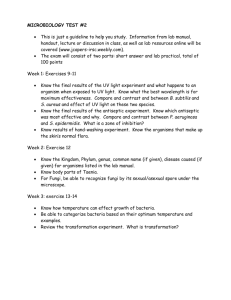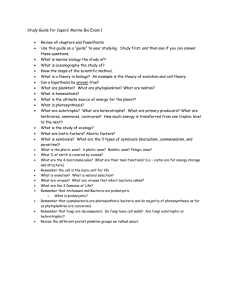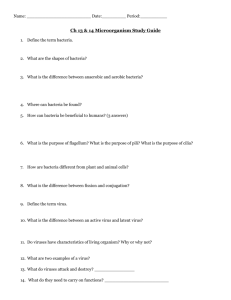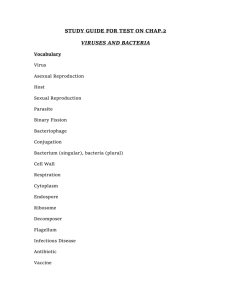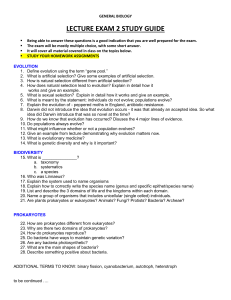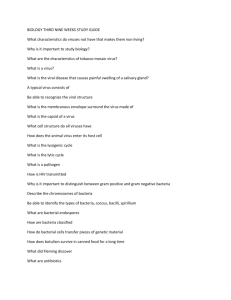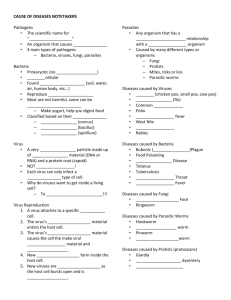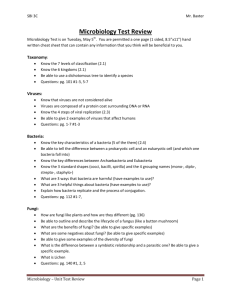Science Chapter 9 Virus, Bacteria, Protists, and Fungi Study Guide
advertisement
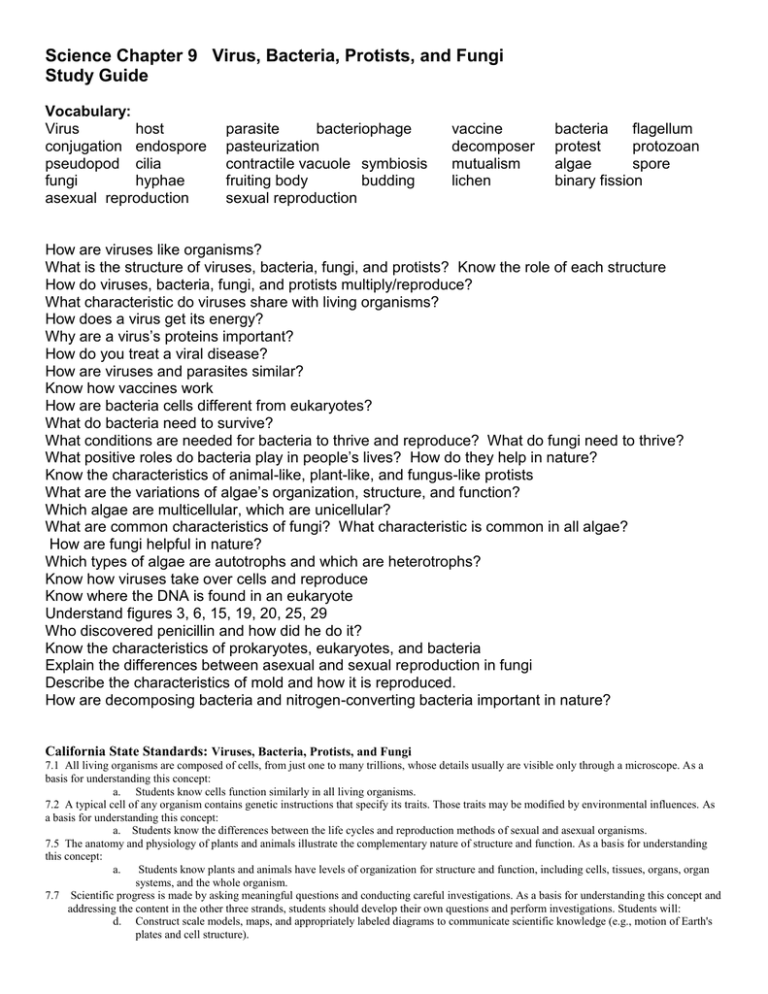
Science Chapter 9 Virus, Bacteria, Protists, and Fungi Study Guide Vocabulary: Virus host conjugation endospore pseudopod cilia fungi hyphae asexual reproduction parasite bacteriophage pasteurization contractile vacuole symbiosis fruiting body budding sexual reproduction vaccine decomposer mutualism lichen bacteria flagellum protest protozoan algae spore binary fission How are viruses like organisms? What is the structure of viruses, bacteria, fungi, and protists? Know the role of each structure How do viruses, bacteria, fungi, and protists multiply/reproduce? What characteristic do viruses share with living organisms? How does a virus get its energy? Why are a virus’s proteins important? How do you treat a viral disease? How are viruses and parasites similar? Know how vaccines work How are bacteria cells different from eukaryotes? What do bacteria need to survive? What conditions are needed for bacteria to thrive and reproduce? What do fungi need to thrive? What positive roles do bacteria play in people’s lives? How do they help in nature? Know the characteristics of animal-like, plant-like, and fungus-like protists What are the variations of algae’s organization, structure, and function? Which algae are multicellular, which are unicellular? What are common characteristics of fungi? What characteristic is common in all algae? How are fungi helpful in nature? Which types of algae are autotrophs and which are heterotrophs? Know how viruses take over cells and reproduce Know where the DNA is found in an eukaryote Understand figures 3, 6, 15, 19, 20, 25, 29 Who discovered penicillin and how did he do it? Know the characteristics of prokaryotes, eukaryotes, and bacteria Explain the differences between asexual and sexual reproduction in fungi Describe the characteristics of mold and how it is reproduced. How are decomposing bacteria and nitrogen-converting bacteria important in nature? California State Standards: Viruses, Bacteria, Protists, and Fungi 7.1 All living organisms are composed of cells, from just one to many trillions, whose details usually are visible only through a microscope. As a basis for understanding this concept: a. Students know cells function similarly in all living organisms. 7.2 A typical cell of any organism contains genetic instructions that specify its traits. Those traits may be modified by environmental influences. As a basis for understanding this concept: a. Students know the differences between the life cycles and reproduction methods of sexual and asexual organisms. 7.5 The anatomy and physiology of plants and animals illustrate the complementary nature of structure and function. As a basis for understanding this concept: a. Students know plants and animals have levels of organization for structure and function, including cells, tissues, organs, organ systems, and the whole organism. 7.7 Scientific progress is made by asking meaningful questions and conducting careful investigations. As a basis for understanding this concept and addressing the content in the other three strands, students should develop their own questions and perform investigations. Students will: d. Construct scale models, maps, and appropriately labeled diagrams to communicate scientific knowledge (e.g., motion of Earth's plates and cell structure).
